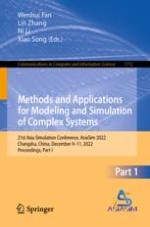The two-volume set CCIS 1712 and 1713 constitutes the proceedings of the 21st Asian Simulation Conference, AsiaSim 2022, which took place in Changsha, China, in January 2023. Due to the Covid pandemic AsiaSim 2022 has been postponed to January 2023.
The 97 papers presented in the proceedings were carefully reviewed and selected from 218 submissions.
The contributions were organized in topical sections as follows: Modeling theory and methodology; Continuous system/discrete event system/hybrid system/intelligent system modeling and simulation; Complex systems and open, complex and giant systems modeling and simulation; Integrated natural environment and virtual reality environment modeling and simulation; Networked Modeling and Simulation; Flight simulation, simulator, simulation support environment, simulation standard and simulation system construction; High performance computing, parallel computing, pervasive computing, embedded computing and simulation; CAD/CAE/CAM/CIMS/VP/VM/VR/SBA; Big data challenges and requirements for simulation and knowledge services of big data ecosystem; Artificial intelligence for simulation; Application of modeling/simulation in science/engineering/society/economy /management/energy/transportation/life/biology/medicine etc; Application of modeling/simulation in energy saving/emission reduction, public safety, disaster prevention/mitigation; Modeling/simulation applications in the military field; Modeling/simulation applications in education and training; Modeling/simulation applications in entertainment and sports.
